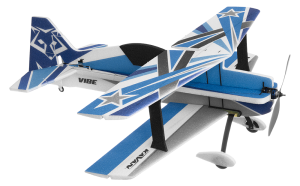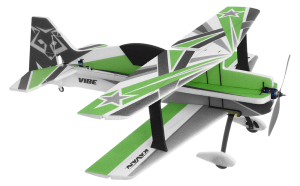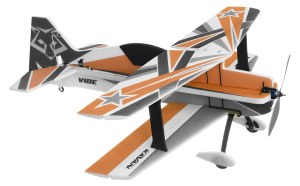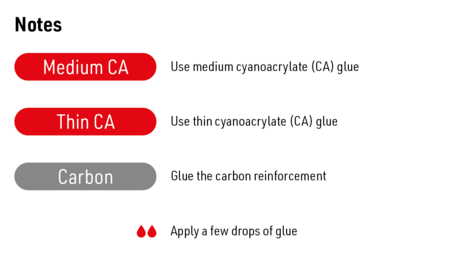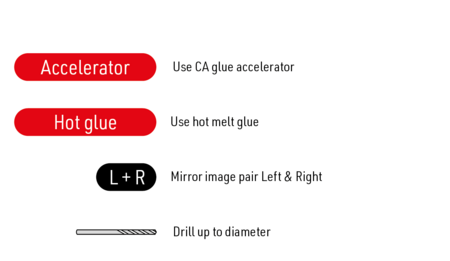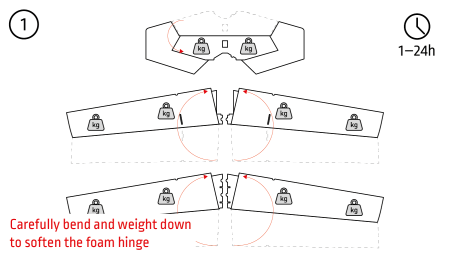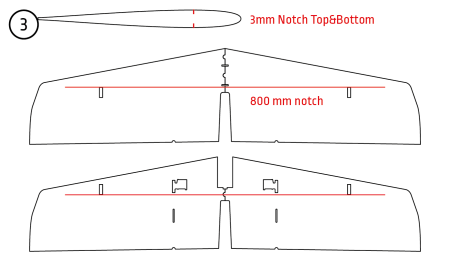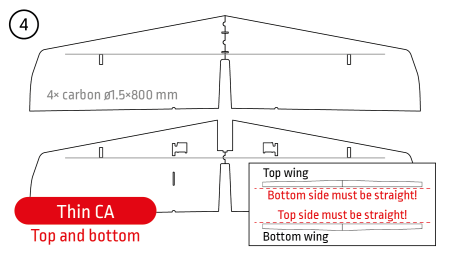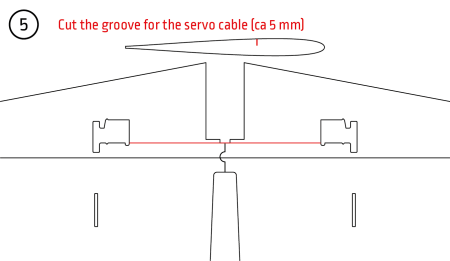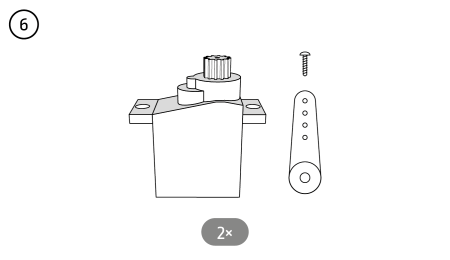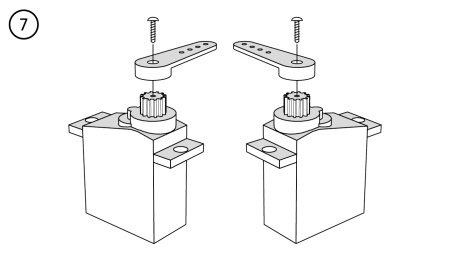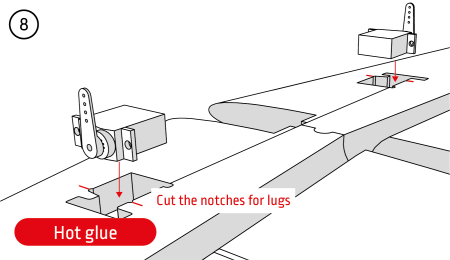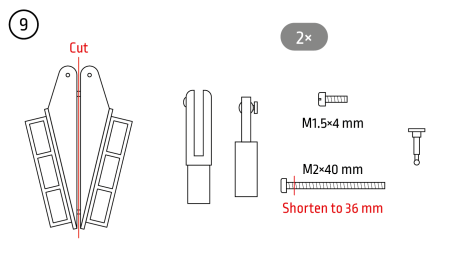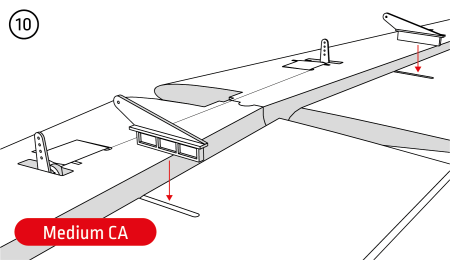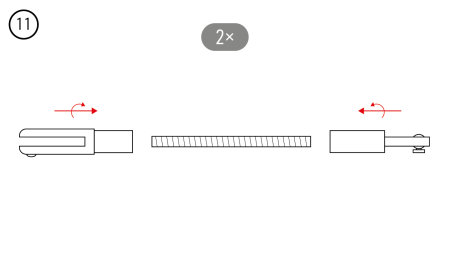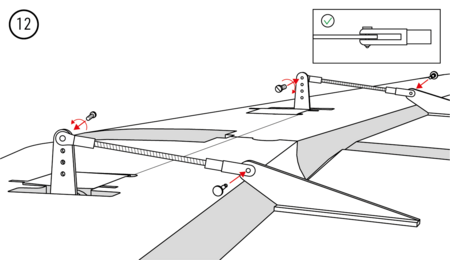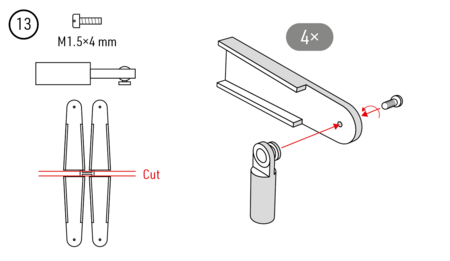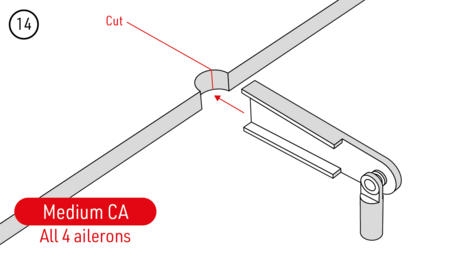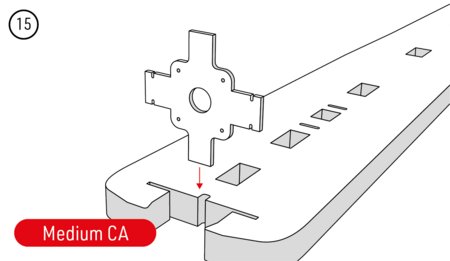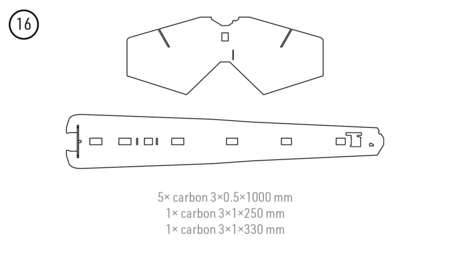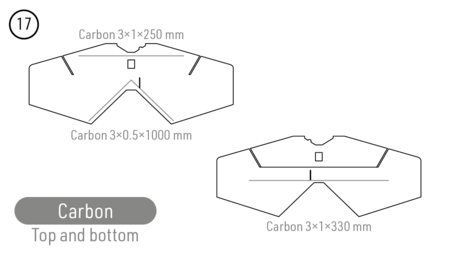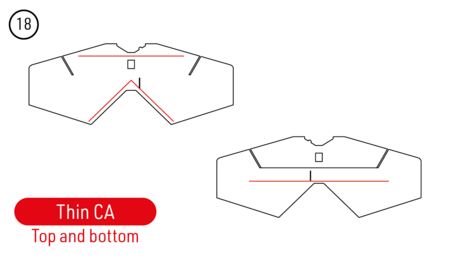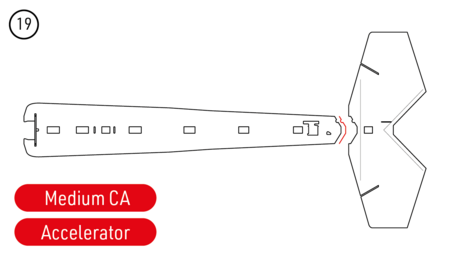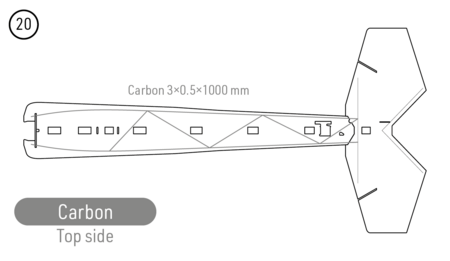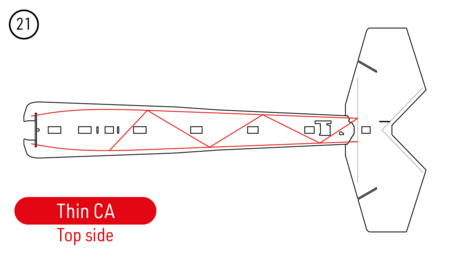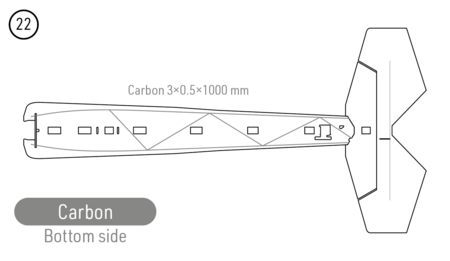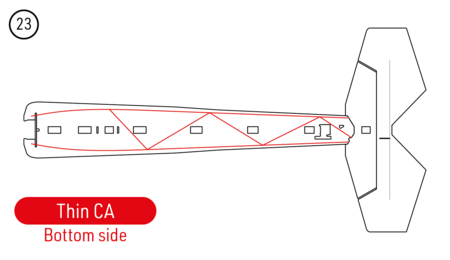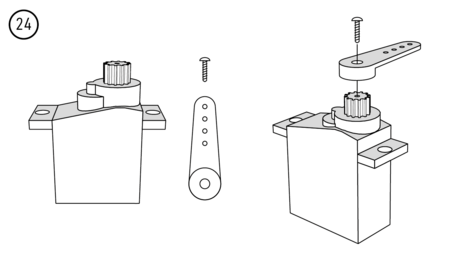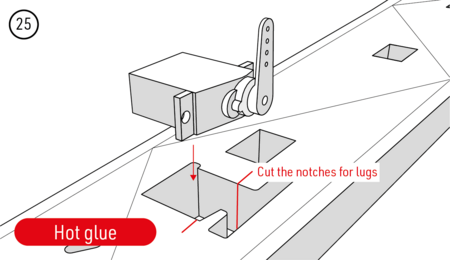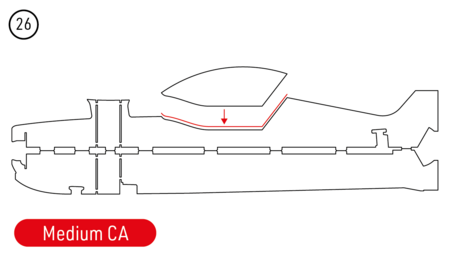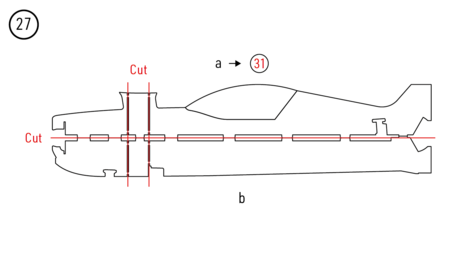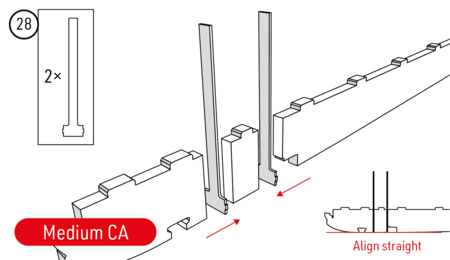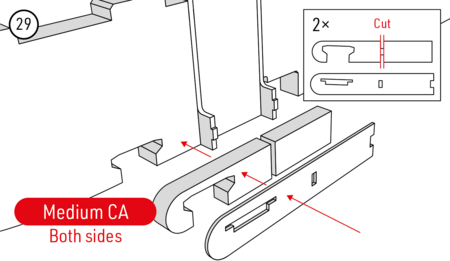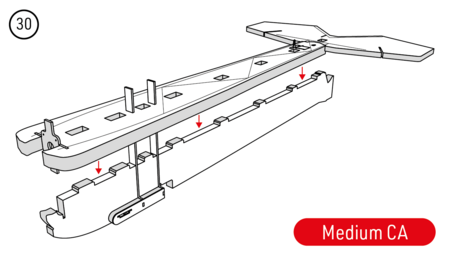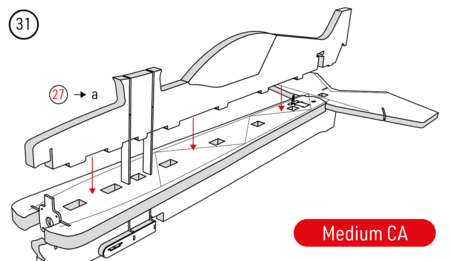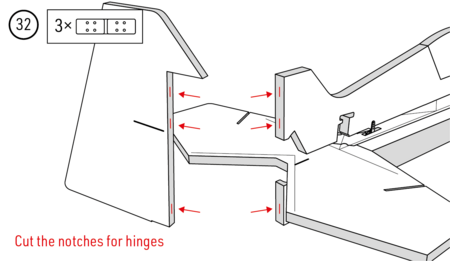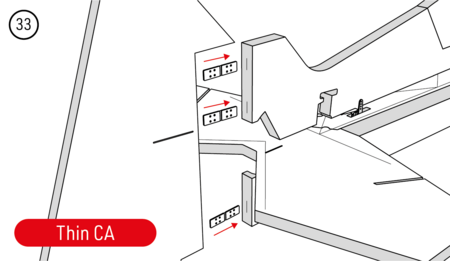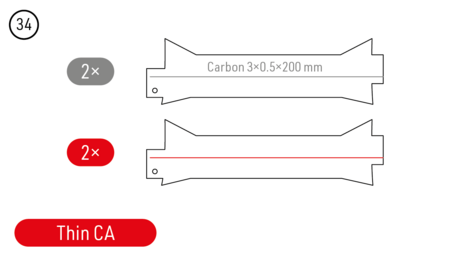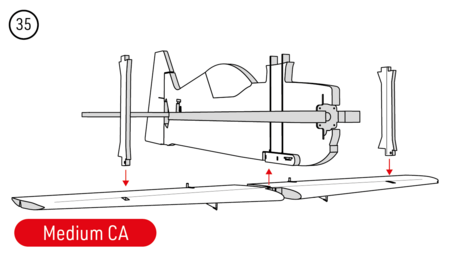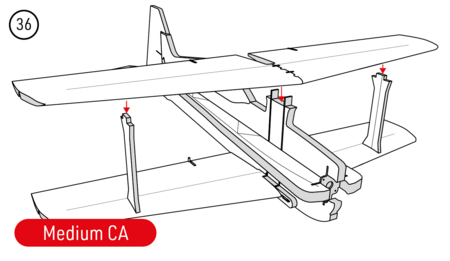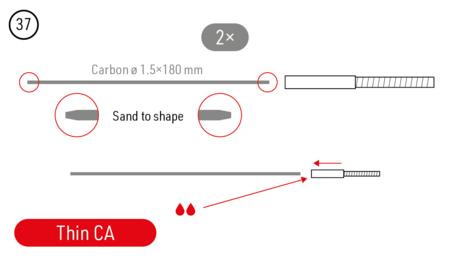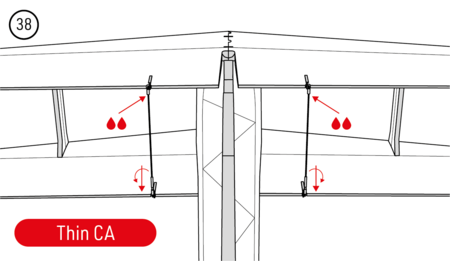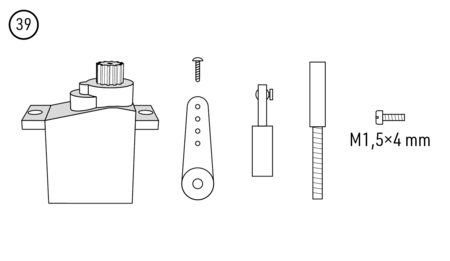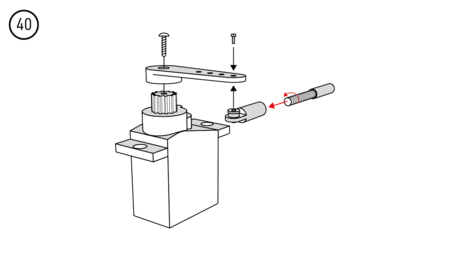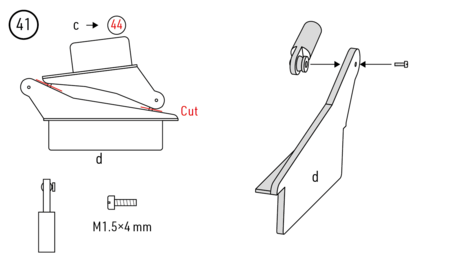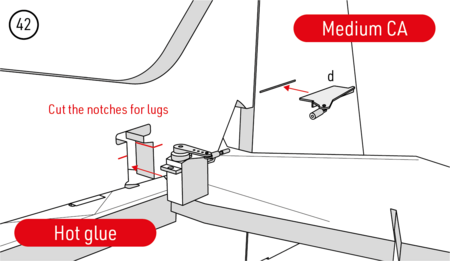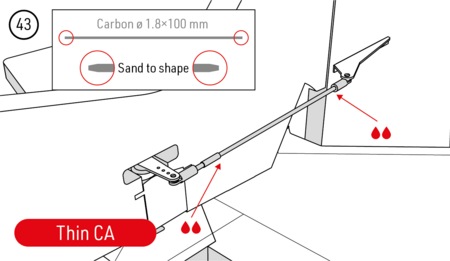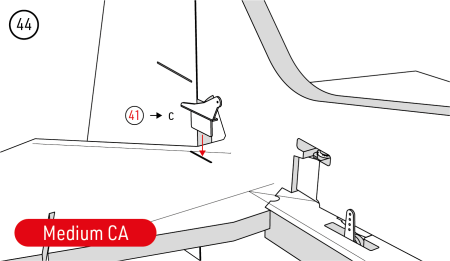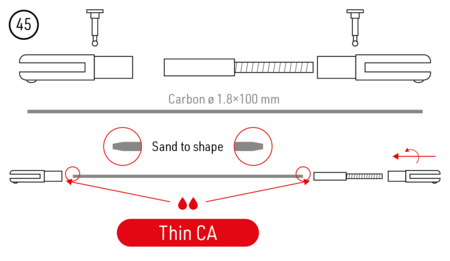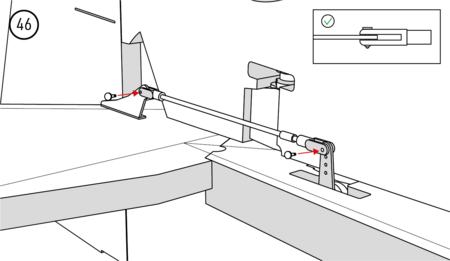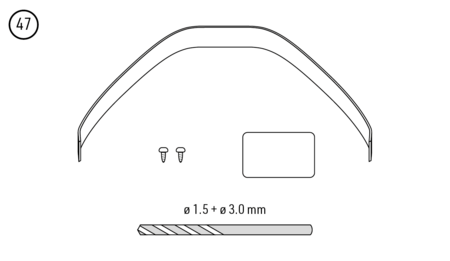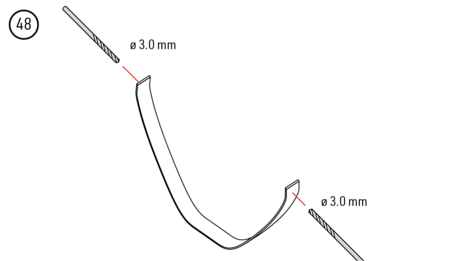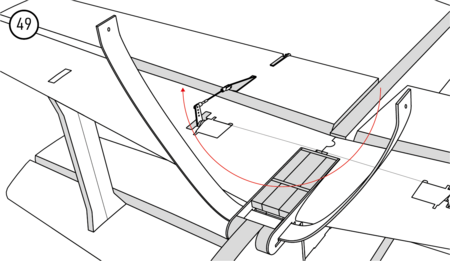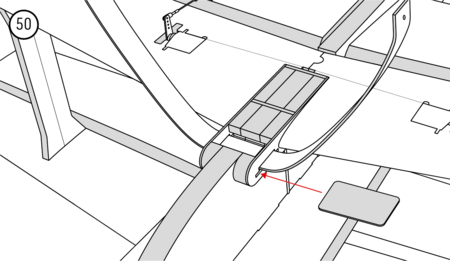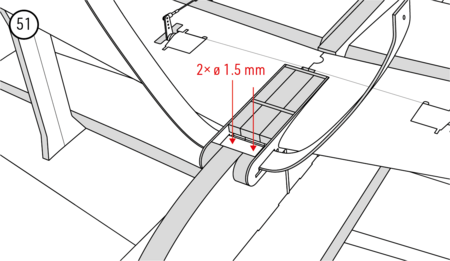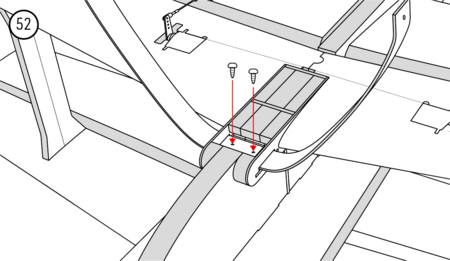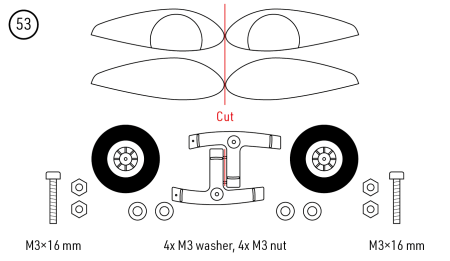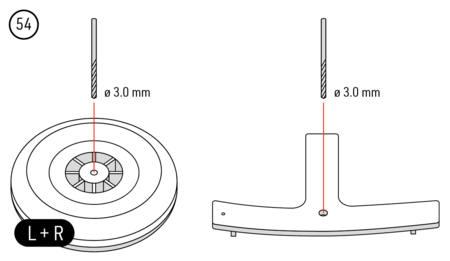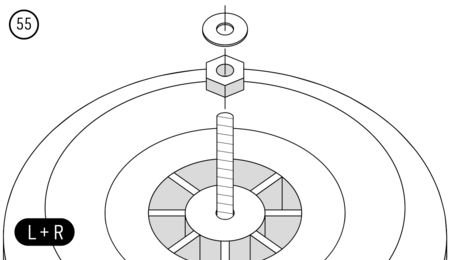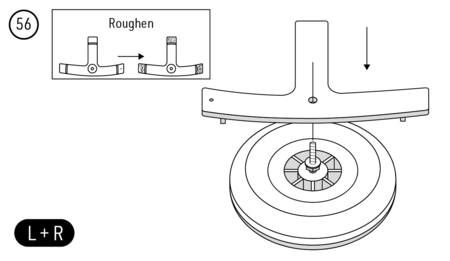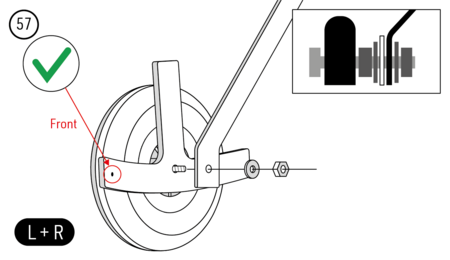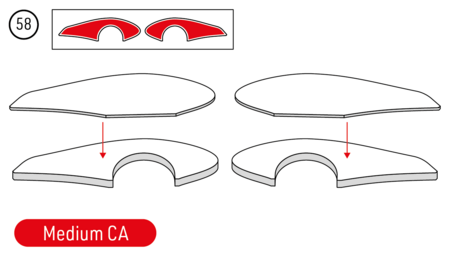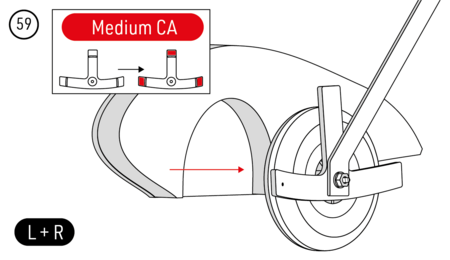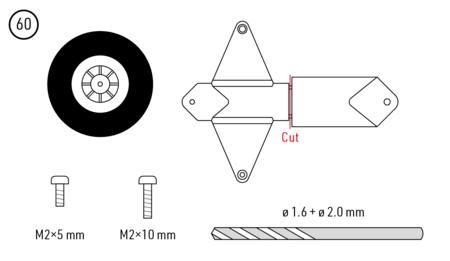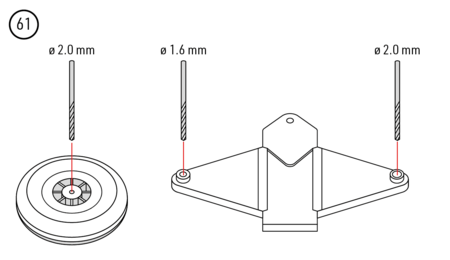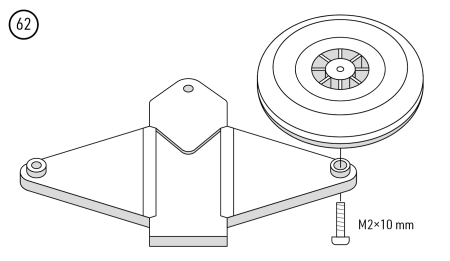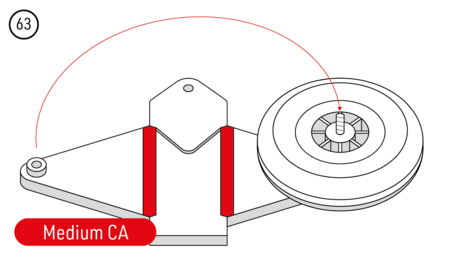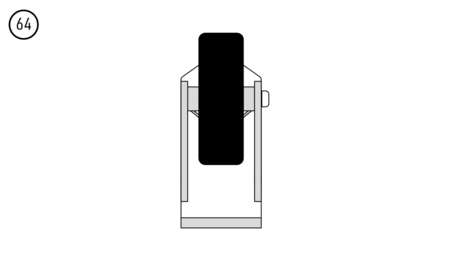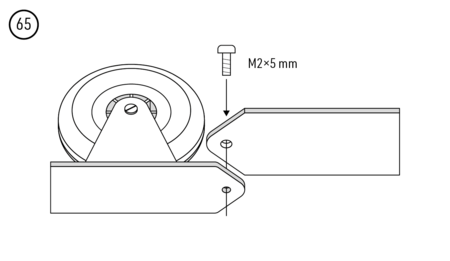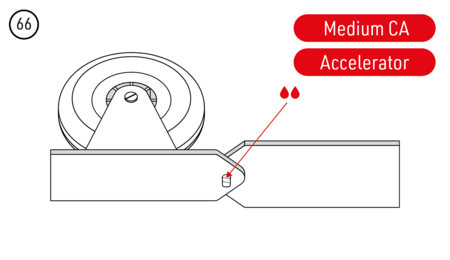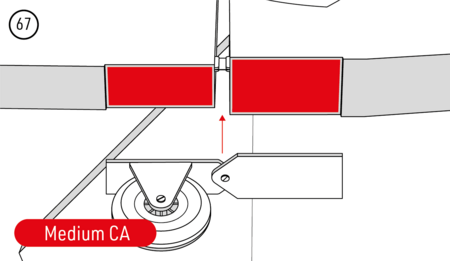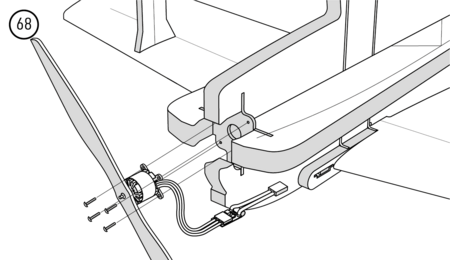KAVAN Vibe - Manuel d'instructions
Introduction
Félicitations pour votre achat du modèle RC acrobatique 3D haute performance VIBE. Vous êtes sur le point de commencer à assembler un modèle fabriqué à partir de mousse EPP (polypropylène expansé) presque incassable, alimentée par un puissant moteur brushless et une batterie LiPo légère. Tous ceux qui ont déjà maîtrisé le pilotage d'un entraîneur « full-house » avec aileron, gouvernails de profondeur et direction et contrôle de l'accélérateur, apprécieront cette bête.
Avertissement
- Ce modèle RC n'est pas un jouet. Utilisez-le avec soin et suivez strictement les instructions de ce manuel.
- Assemblez ce modèle en suivant strictement ces instructions. NE PAS modifier ou altérer le modèle. Le fait de ne pas le faire expirera automatiquement la garantie. Suivez les instructions pour obtenir un modèle sûr et solide à la fin de l'assemblage.
- Les enfants de moins de 14 ans doivent utiliser le modèle sous la supervision d'un adulte.
- Assurez-vous que le modèle est en parfait état avant chaque vol. Vérifiez si tout l'équipement fonctionne correctement et si le modèle n'est pas endemagé dans sa structure.
- Ne volez que les jours avec une brise légère et dans un endroit sûr, loin de tout obstacle ou source d'interférence.
Before you start
- If you are not an experienced RC pilot, plan to have a fully competent pilot check your completed model and help you with your first flights. Even though we have tried to provide you with a thorough instruction manual, RC models are rather complicated, and an experienced modeller can quickly check over your model to ensure your first flights are successful.
- Please assemble your model according to these instructions. Do not modify or change your model in any way. Doing so may adversely change its flying characteristics.
- Before you begin, check the entire contents of this kit to make sure no parts are missing or damaged. It will also help you to become familiar with each component of your plane. If you find that any of the parts are either missing or damaged, contact your dealer immediately for replacement.
- Note: Your dealer cannot accept kits for return if construction has begun.
- Trial fit each part before glueing it in place. Before assembling, make sure you are using the correct part and that it fits well. No amount of glue can make up for a poorly fitting part.
- The manual contains a drawing showing the default Centre of Gravity (CG) position and recommended control surface throws. Please note it is essential to keep the recommended CG position for the first flight, or the model could be unstable, hard to control or even unable to fly. Later, you can fine-tune the CG position to suit your flying style and skills.
Safety precautions and warnings
- An RC aeroplane is not a toy! If misused, it can cause serious bodily harm and damage to property. Fly only in a safe place, following all instructions and recommendations in this manual. Beware of the propeller! Keep loose items that can get entangled in the propeller away from the spinning propeller, including loose clothing or other objects such as pencils and screwdrivers. Ensure that your and other people’s hands and face are kept away from the rotating propeller.
- As the user of this product, you are solely responsible for operating it in a manner that does not endanger yourself and others or result in damages to the product or the property of others. This model is controlled by a radio signal subject to interference from many sources outside your control. This interference can cause momentary loss of the controls, so it is advisable to always keep a safe distance in all directions around your model, as this margin will help to avoid collisions or injury.
- Never operate your model with low transmitter batteries.
- Always operate your model in an open area away from power lines, cars, traffic, or people. Avoid operating your model in populated areas where injury or damage can occur.
- Carefully follow the directions and warnings for this and any optional support equipment (chargers, rechargeable batteries, etc.) which you use.
- Keep all chemicals, small parts and anything electrical out of the reach of children.
- Moisture causes damage to electronics. Avoid water exposure to all equipment not specifically designed and protected for this purpose.
- The model is made mainly of plastic - it is not fireproof. It may not be exposed to higher temperatures, otherwise severe distortion of the foam airframe or other damage may occur.
Technical specifications
| Wingspan | 1000 mm |
| Length | 1030 mm |
| All-up weight | 750–800 g |
You will need
- At least a four-channel RC kit, a power unit with 3–4S LiPo flight pack and servos - refer to "Recommended power systems and servos."
- Regular modeller‘s tools: modeller‘s knife (KAV66.770), screwdrivers, pliers, electric drill with drill bits, No. 180–360 sandpaper, etc.
- Glue: medium and thin CA glue (KAV56.9951, KAV56.9952), accelerator for CA glue (KAV56.9958/KAV56.9959), hot melt glue.
Recommended power systems and servos
- Sunday 3D: For 3D aerobatic beginners and Sunday flyers.
- 3D: For everybody who likes it hot and 3D.
| 3S LiPo - Sunday 3D | 3S LiPo - 3D | 4S LiPo - 3D | |
|---|---|---|---|
| Motor | KAVAN C3536-1000 | KAVAN C3536-1000 | KAVAN C3536-1000 |
| Propeller | APC 11×4.7"SF | APC 11×4.7"SF | APC 10×4.7"SF |
| ESC | KAVAN R-40SB Plus | KAVAN R-50SB Plus | KAVAN R-50SB Plus |
| Battery | KAVAN LiPo 11,1V 1800mAh 40/80C | KAVAN LiPo 11,1V 1300mAh 40/80C | KAVAN LiPo 14,8V 1300mAh 40/80C |
| Servos | KAVAN GO-13MG | KAVAN GO-1013MG | KAVAN GO-1013MG |
RC kit installation and pre-flight check
- Refer to the instruction manual of your radio and carefully hook up the on-board electronics. The correct linkage length and control surface neutral position - refer to assembly steps 37, 43 and 45.
- When everything is correctly connected, turn on your transmitter and plug in the flight pack. Check the neutral positions and throws of all control surfaces. If you need to make the control surface throws smaller, simply move the pushrod closer to the centre on the servo arm, or move it farther from the control surface on the control horn. And vice versa.
| Recommended
throws |
Low rate | High rate | ||
|---|---|---|---|---|
| Rate | Expo | Rate | Expo | |
| Ailerons | ± 20° | 30–40 % | ± 35° or more | 40 % |
| Elevator | ± 30° | 30–40 % | ± 50° or more | 40 % |
| Rudder | ± 35° | 40–45 % | ± 47° | 45 % |
- The "Low rate" recommended control surface throws are suitable for a less skilled pilot and classic pattern aerobatics; the "High rate" setting is for 3D aerobatic and skilled pilots.
- Check the direction of rotation of the propeller. If incorrect, swap two of the three wires between the ESC and motor or program the ESC (refer to the ESC manual).
- Attach the flight pack to the side of the bottom part of the fuselage using a strip of hook-and-loop tape to get the correct position of the centre of gravity (CG) 85 mm, refer to Fig. 69. You can fine-tune the CG position later to suit your flying style.
- Fully charge your flight pack and transmitter batteries, check the proper function of your radio and perform the range check of your radio according to its instruction manual. The range has to be almost the same with the motor off and at full throttle (no more than a 10% decrease is acceptable). DO NOT try to fly unless the range check is 100% successful.
Flying
The test flying and fine-tuning is pretty much straightforward. There will be no surprise for a medium-advanced pilot who is supposed to fly this model.
Parts list
Main parts
| Part | Quantity | Material | Dimensions | Step no. |
|---|---|---|---|---|
| Instruction manual | 1 | Paper | A4 | |
| Fuselage - vertical part | 1 | EPP | 26 | |
| Fuselage - horizontal part | 1 | EPP | 19 | |
| Top wing - left + right | 1+1 | EPP | 2 | |
| Bottom wing - left + right | 1+1 | EPP | 2 | |
| Canopy | 1 | EPP | 26 | |
| Rudder | 1 | EPP | 32 | |
| Horizontal tailplane | 1 | EPP | 16 | |
| Wing strut | 2 | EPP | 34 | |
| Undercarriage block | 2 | EPP | 29 | |
| Wheel pant - inner | 2 | EPP | 53 | |
| Wheel pant - outer | 2 | EPP | 53 | |
| Main Undercarriage | 1 | Carbon | 47 | |
| Fuselage vertical reinforcement | 2 | Plywood | 3 mm | 28 |
Carbon parts bundle
| Part | Quantity | Material | Dimensions | Step no. |
|---|---|---|---|---|
| Carbon spar | 5 | Carbon | 3×0.5×1000 mm | 20, 22 |
| Carbon spar | 1 | Carbon | 3×1.0×330 mm | 17 |
| Carbon spar | 1 | Carbon | 3×1.0×250 mm | 17 |
| Carbon spar | 2 | Carbon | 3×0.5×200 mm | 34 |
| Carbon rod | 4 | Carbon | Ø1.5×800 mm | 4 |
Small accessories bag
| Part | Quantity | Material | Dimensions | Step no. |
|---|---|---|---|---|
| Firewall | 1 | Plywood | 3 mm | 15 |
| Rudder hinge | 3 | Plastic | 32 | |
| Elevator pushrod | 1 | Carbon | Ø1.8×100 mm | 45 |
| Rudder pushrod | 1 | Carbon | Ø1.8×100 mm | 45 |
| Aileron horn | 2 | Plastic | 9 | |
| Rudder horn | 1 | Plastic | 41 | |
| Elevator horn | 1 | Plastic | 41 | |
| Aileron joiner horn | 4 | Plastic | 13 | |
| Undercarriage holder | 2 | Fibreglass | 1.5 mm | 29 |
| Undercarriage plate | 1 | Fibreglass | 1.5 mm | 47 |
| Wheel | 2 | Plastic | Ø50 mm | 53 |
| Tailwheel | 1 | Plastic | Ø25 mm | 60 |
| Wheel pant holder | 2 | Plastic | 53 | |
| Wheel axle | 2 | Steel | M3×16 mm socket screw | 53 |
| M3 nut | 4 | Steel | M3 | 53 |
| M3 washer | 4 | Steel | Ø6 mm | 53 |
| Undercarriage bolt | 2 | Steel | 3.8×7 mm self-tapping screw | 47 |
| Tailwheel bracket | 1 | Plastic | 60 | |
| Tailwheel axle | 1 | Steel | M2×10 mm screw | 60 |
| Tailwheel bracket axle | 1 | Steel | M2×5 mm screw | 60 |
| Ball link | 8 | Plastic/brass | 9, 39 | |
| Ball link screw | 8 | Steel | M1.5x5 mm screw | 9, 39 |
| Clevis | 4 | Plastic | 9 | |
| Clevis pin | 4 | Brass | 9 | |
| Aileron pushrod | 2 | Steel | M2×40 mm screw | 9 |
| Aileron joiner rod | 2 | Carbon | Ø1.5×180 mm | 37 |
| M2/2 threaded coupler | 2 | Brass | 45 | |
| M2/1.5 threaded coupler | 2 | Brass | 37 |
Assembly
Follow the illustrated, step-by-step building manual below.
Guarantee
The KAVAN Europe s.r.o. products are covered by a guarantee that fulfils currently valid legal requirements in your country. If you wish to make a claim under a guarantee, please contact the retailer from whom you first purchased the equipment. The guarantee does not cover faults caused in the following ways: crashes, improper use, incorrect connection, reversed polarity, maintenance work carried out late, incorrectly or not at all, or by unauthorised personnel, use of other than genuine KAVAN Europe s.r.o. accessories, modifications or repairs which were not carried out by KAVAN Europe s.r.o. or an authorised KAVAN Europe s.r.o., accidental or deliberate damage, defects caused by normal wear and tear, operation outside the Specification, or in conjunction with equipment made by other manufacturers. Please be sure to read the appropriate information sheets in the product documentation!
If you have any questions about the VIBE and its operation, please contact the technical and service staff at KAVAN Europe s.r.o. by e-mail (info@kavanrc.com for general technical information, service@kavanrc.com for service) or by phone (+420 466 260 133 for general technical information, +420 463 358 700 for service), during working hours 8:00 AM–4:00 PM CET, Monday to Friday).
